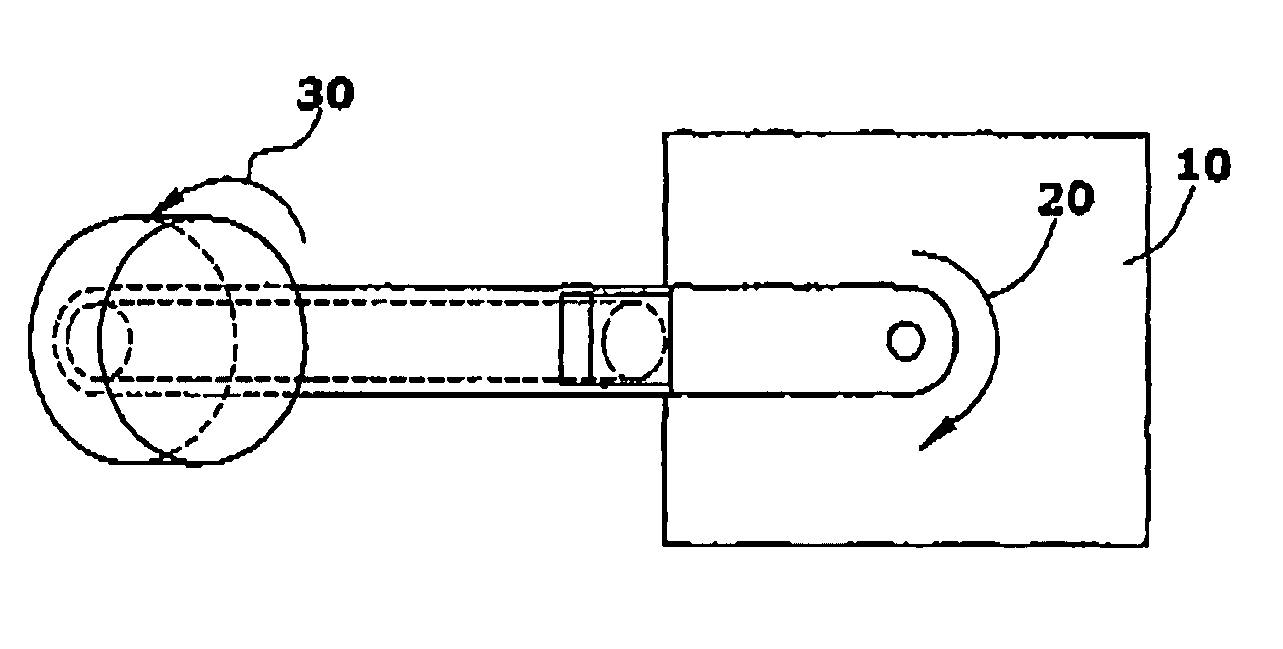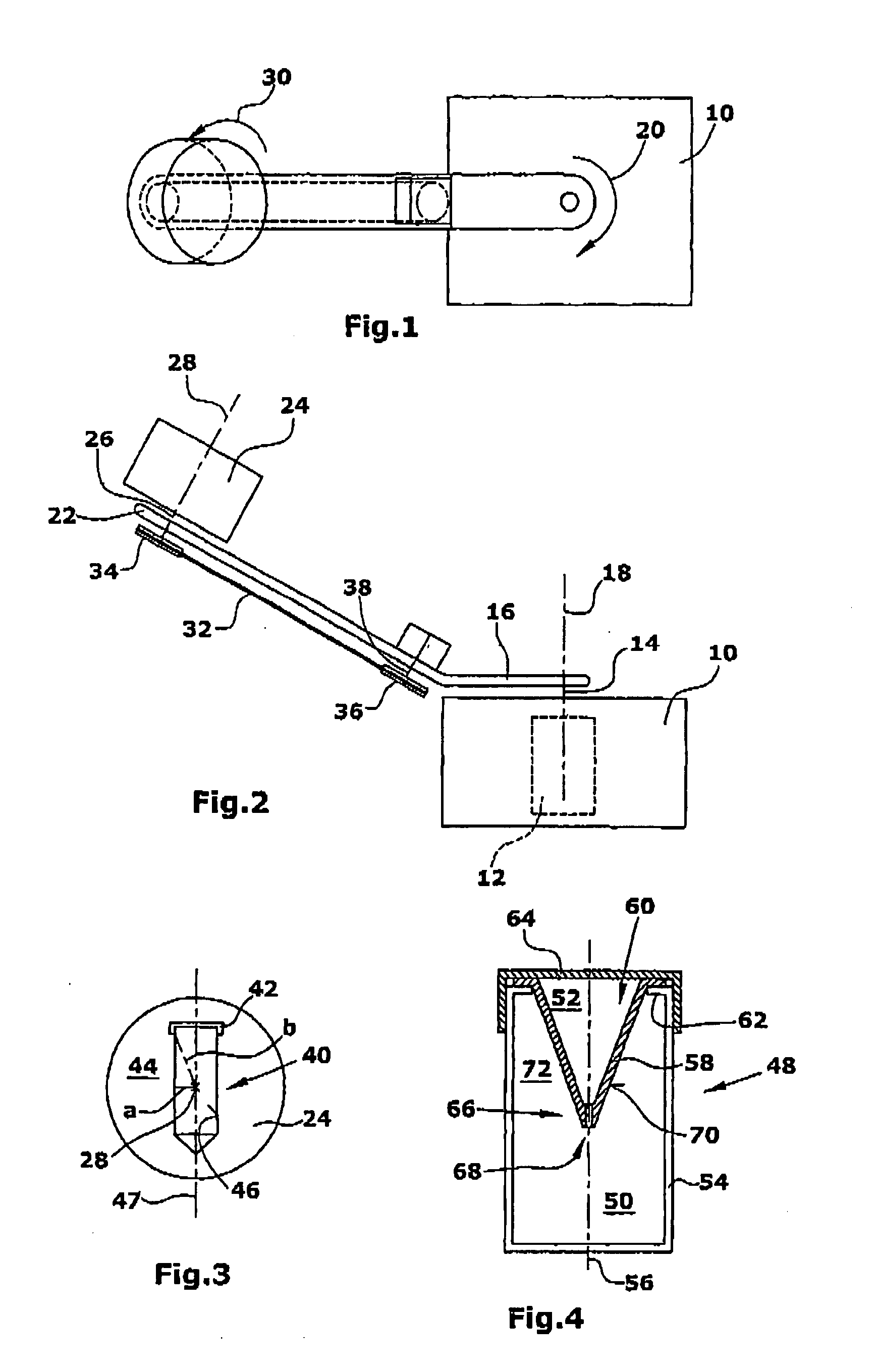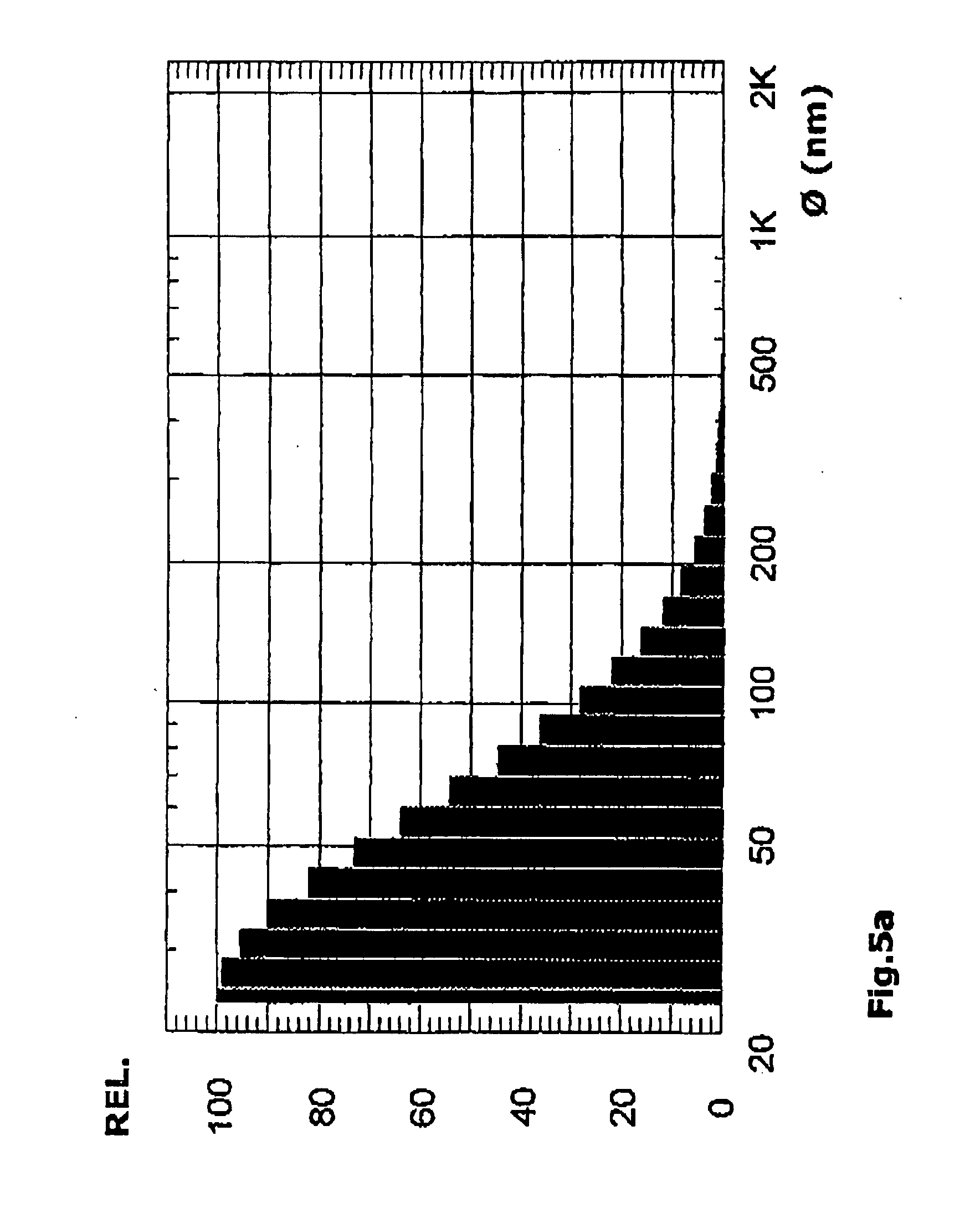Manufacture of Lipid-Based Nanoparticles Using a Dual Asymmetric Centrifuge
a technology of lipid-based nanoparticles and centrifuges, which is applied in the direction of antibody medical ingredients, aerosol delivery, spray delivery, etc., can solve the problems of large equipment expenditure, cumbersome processing, and non-uniform size and lamellarity of said liposomes, and achieve the effect of manufacturing lipid-based nanoparticles
- Summary
- Abstract
- Description
- Claims
- Application Information
AI Technical Summary
Benefits of technology
Problems solved by technology
Method used
Image
Examples
example 1
Preparation of Vesicular Phospholipid Gels (VPG) and Liposomal Dispersions by DAC Technology; Comparison of the Formed Liposomes with Liposomes Prepared by Means of High-Pressure Homogenization
[0226]1.48 g of a mixture of EPC3 (hydrogenated egg lecithin, Lipoid) and cholesterol (55 mole %:45 mole %), which existed as a solid solution, was weighed into a 25 ml medicine bottle (outer diameter: 36 mm) and flange-sealed (vial 1). A second medicine bottle (vial 2) contained the same amount of lipid, but in this case 3.0 g of glass beads (diameter about 1 mm) was additionally added. Into both vials, 2.22 ml of mannitol solution (5%) was injected, and each of the vials was subjected to speed mixing at 3540 rpm at RT (room temperature) for 4.5 min. By adding 6.4 ml mannitol solution (5%) in 2 steps (step 1: 100 μl), the vesicular phospholipid gel (VPG) formed was redispersed (speed mixing for 1 min each), and the mean size of the liposomes was determined by photon correlation spectroscopy (...
example 2
Preparation of Vesicular Phospholipid Gels (VPG) and Liposomal Dispersions by DAC Technology; Variation of the DAC Parameters (i) Mixing Speed, (ii) Vessel Diameter, (iii) Speed Mixing Time. (iv) Temperature Influence and (v) Addition of a Mixing Aid
[0227]In the experiments described in the following, liposomes were prepared by means of DAC technology by analogy with Example 1 (same lipid mixture (mixture of EPC3 (hydrogenated egg lecithin, Lipoid) and cholesterol (55:45 mole %)), same aqueous medium (5% mannitol solution)). The speed of the Speedmixer®, the time of speed mixing, the diameter of the vessel employed for speed mixing and the temperature were varied. In addition, mixing was operated with and without the addition of a mixing aid, and for this purpose, glass beads were employed in these Examples.
[0228]The liposome gel formed during speed mixing was redispersed with three times the primarily employed aqueous volume, and the respectively formed liposomes were subsequently ...
example 3
Preparation of Vesicular Phospholipid Gels (VPG) and / or Liposomal Dispersions from Different Lipids / Mixtures of Lipids by DAC Technology
[0229]In the experiments described in the following, liposomes were prepared by means of DAC technology by analogy with Examples 1 and 2. In this experiment, the lipid mixtures were varied. Table 3 shows the experiments in which lipid mixtures were employed that already existed as solid solutions or in which lipids of only one type were employed. Thus, the lipid mixtures were previously taken up in CHCl3 / MeOH 2:1, the solvent was removed by rotary evaporation, and the lipid film formed was dried under vacuum and scratched out of the flask, or the lipid mixture was supplied in an already molecular disperse form.
[0230]In the experiments set forth in Table 4, the lipids were employed as individual components. For comparison, values from Table 3 with lipid mixtures used as a solid solution were stated again (marked with “X” or “*”).
[0231]The liposome ge...
PUM
| Property | Measurement | Unit |
|---|---|---|
| time | aaaaa | aaaaa |
| diameter | aaaaa | aaaaa |
| diameter | aaaaa | aaaaa |
Abstract
Description
Claims
Application Information
 Login to View More
Login to View More - R&D
- Intellectual Property
- Life Sciences
- Materials
- Tech Scout
- Unparalleled Data Quality
- Higher Quality Content
- 60% Fewer Hallucinations
Browse by: Latest US Patents, China's latest patents, Technical Efficacy Thesaurus, Application Domain, Technology Topic, Popular Technical Reports.
© 2025 PatSnap. All rights reserved.Legal|Privacy policy|Modern Slavery Act Transparency Statement|Sitemap|About US| Contact US: help@patsnap.com



